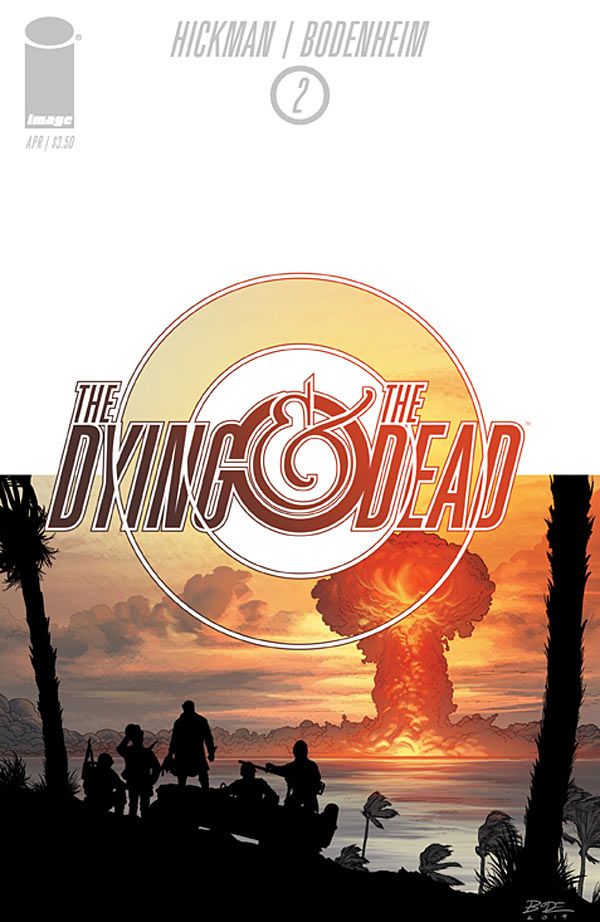In "The Dying and the Dead" #2 by Jonathan Hickman and Ryan Bodenheim, the Colonel is back in the saddle. Even more obviously than in the debut issue, Hickman's plotting follows the traditional shape of a quest, while the look and feel of the characters and the setting are a combination of a western crossed with the occult. This is the type of genre fusion that Hickman is adept at, since his series "East of West" also mixes up a Wild West attitude with a tech-imbued mythology. The furniture and window-dressings here are globe-spanning and supernatural, but the walk and talk are all Western.
The first issue established the epic scope and stakes, a MacGuffin called the Bah al'Sharur and the hero's cliched motivation. The second issue is completely taken up with collecting the supporting cast of the Colonel's posse before the quest begins in earnest. Predictably, retrieval takes persuasion of various kinds for each addition to the cast.
Doyle Beller, Everette Moss, Phineas Fairfax and Martin Shepard all make memorable entrances. The team assembly follows the usual trajectory, including a prison breakout. The first few scenes introduce Doyle, and Hickman's characterization and storytelling technique are particularly fine here. He drops the reader in the middle of the action as an observer and lets Doyle's position as a tactful, well-liked leader become obvious through the conversations and action.
Hickman has chosen to make all the major human characters elderly men. This makes "The Dying and the Dead" different from most quest narratives, which tend to favor the young. In retirement home scenes, Hickman strives to take his characters' age seriously, showing that Doyle is subject to the same institutional loss of freedom and accumulated indignities as any other elderly resident. Right now, geriatric care and end-of-life discussions are a hot topic in the news, fiction and nonfiction, so it's nice to see these realistic touches, especially if Hickman can keep them coming.
Hickman and Bodenheim's comic timing and panel composition are superb. Bodenheim's introductory shots of Truman, the "muscle" among the residents, are hilarious. Unfortunately, Hickman goes too far by making one of the nurses thuggish and sadistic. No doubt such people exist, but the evil monologue is over-the-top. A cardboard villain makes the whole situation less believable. Despite how Doyle is apparently trying to run a drug ring, he's immediately sympathetic, so the contrast was overkill. The nurse is presented just to be knocked down shortly after. That said, the one-on-one knockdown scene is wonderfully satisfying. Bodenheim has great skill with movement and Doyle's figure, stiff from age, becomes fluid as he goes into butt-kicking mode.
Other introductions go equally well. Everette's dialogue steals the show with its good humor, diction and the rhythms of his speech. Martin's post-breakout reflections are eloquent, and his final line of "I was a ghost" is beautifully resonant with Hickman's larger themes about living and dying. Character development is still weak for the people of the City, so the final scene of "The Dying and the Dead" #2 gets its power from Bodenheim's visual tableau. Garland's pale palette reinforces the narrative themes but, at this point, the visual effect may work against reader immersion.
The plot doesn't stray far from the well-worn path of Wild West gunslingers with hearts of gold and nerves of steel, so the narrative tension rests on Hickman's dialogue and Bodenheim's facial expressions, but those are more than sufficient. The characters have enough presence and the conservations have enough snap that "The Dying and the Dead" is well worth reading despite the lack of surprises in its shape and direction.

